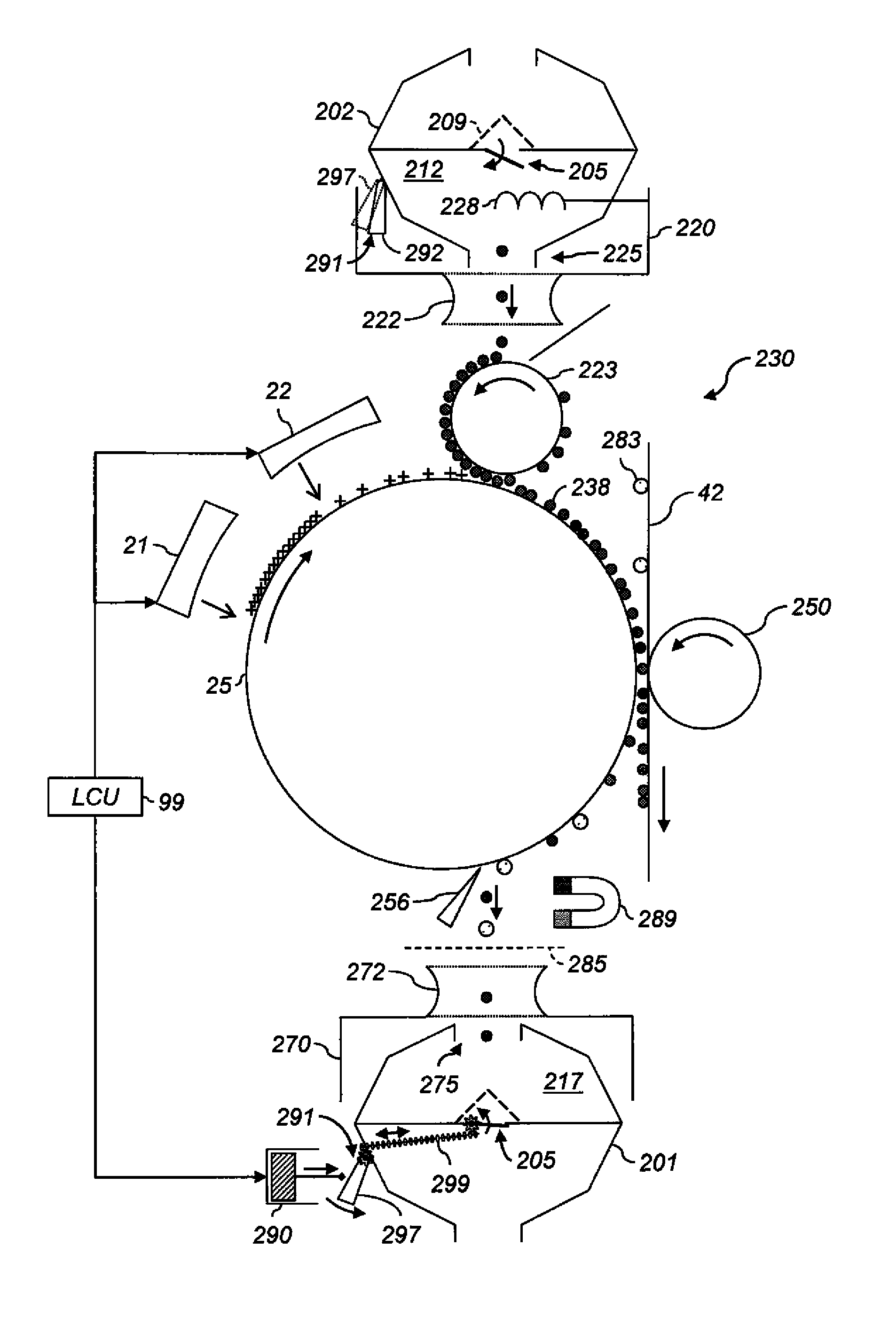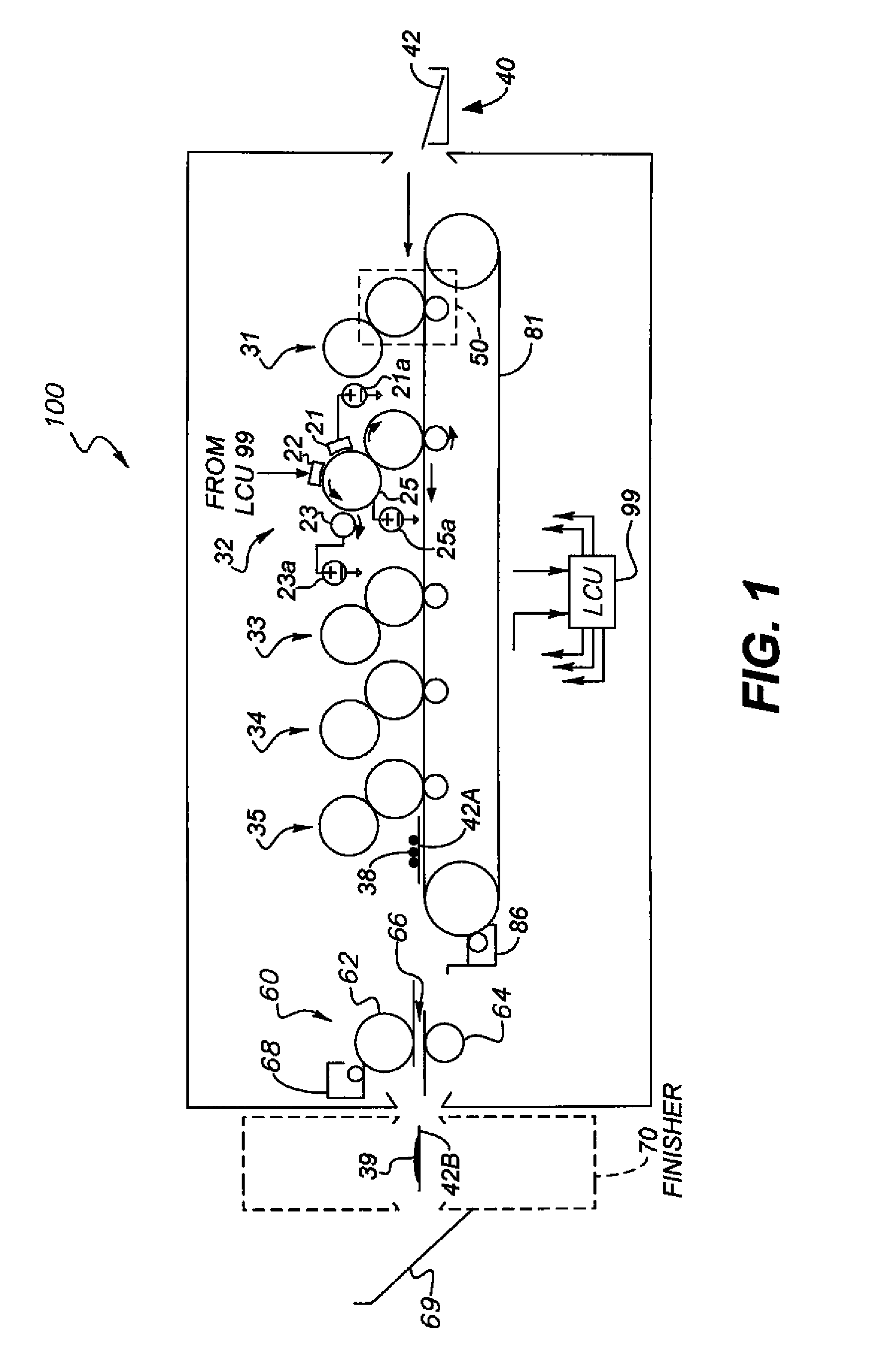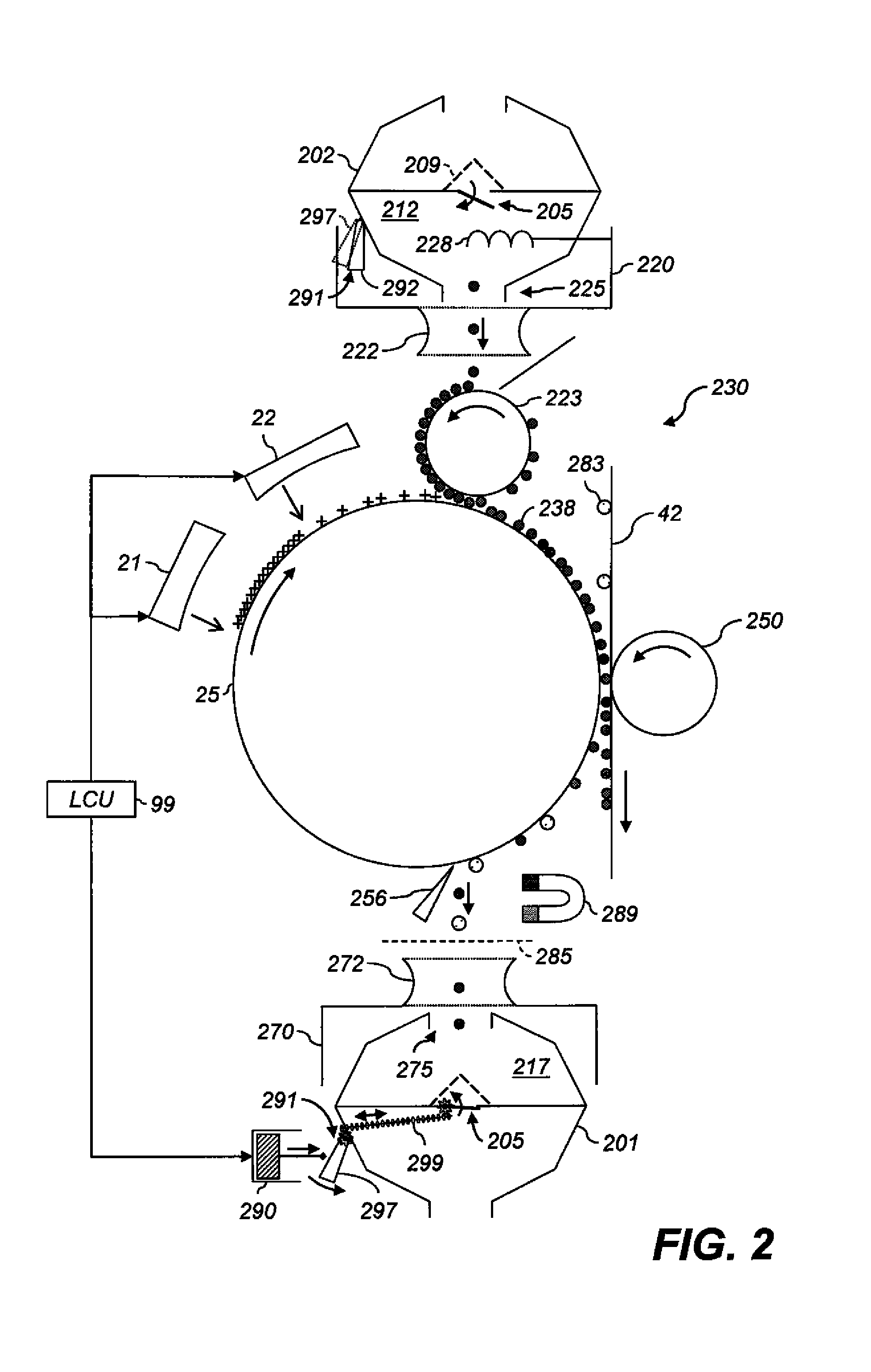Electrophotographic printer with stateful toner bottles
a technology of toner bottles and printers, applied in the field ofelectrophotographic printing, can solve the problems of increasing the downtime of printers for toner change, inconvenient toner change, and inconvenient toner change, so as to reduce the waste produced by printers and the time required by operators. , the effect of reducing the waste of toner
- Summary
- Abstract
- Description
- Claims
- Application Information
AI Technical Summary
Benefits of technology
Problems solved by technology
Method used
Image
Examples
Embodiment Construction
[0041]The electrophotographic process can be embodied in devices including printers, copiers, scanners, and facsimiles, and analog or digital devices, all of which are referred to herein as “printers.” Various aspects of the present invention are useful with electrostatographic printers such as electrophotographic printers that employ toner developed on an electrophotographic receiver, and ionographic printers and copiers that do not rely upon an electrophotographic receiver. Electrophotography and ionography are types of electrostatography (printing using electrostatic fields), which is a subset of electrography (printing using electric fields).
[0042]A digital reproduction printing system (“printer”) typically includes a digital front-end processor (DFE), a print engine (also referred to in the art as a “marking engine”) for applying toner to the receiver, and one or more post-printing finishing system(s) (e.g. a UV coating system, a glosser system, or a laminator system). A printe...
PUM
 Login to View More
Login to View More Abstract
Description
Claims
Application Information
 Login to View More
Login to View More - R&D
- Intellectual Property
- Life Sciences
- Materials
- Tech Scout
- Unparalleled Data Quality
- Higher Quality Content
- 60% Fewer Hallucinations
Browse by: Latest US Patents, China's latest patents, Technical Efficacy Thesaurus, Application Domain, Technology Topic, Popular Technical Reports.
© 2025 PatSnap. All rights reserved.Legal|Privacy policy|Modern Slavery Act Transparency Statement|Sitemap|About US| Contact US: help@patsnap.com



